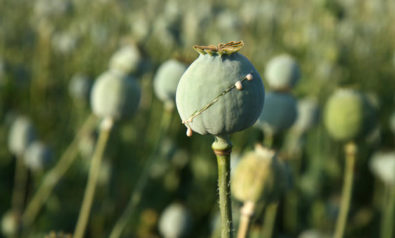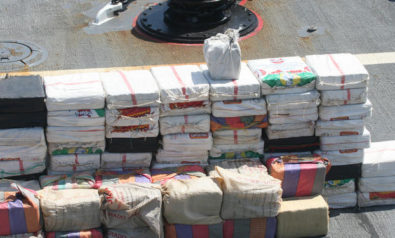By Hanna Wolf and Viet-Chi Pham
In the global illicit drug trade, governments as well as the police are facing changing smuggling patterns, which include newly developed trafficking routes and ruthless groups of organized crime.
Background
As the demand for heroin, cocaine and amphetamines becomes increasingly global, so does drug trafficking. Affecting large areas of the world, the drug trade leaves behind high corruption and soaring crime rates, destabilizing entire countries.
Cannabis comprises the largest illicit drug market. Since cannabis can be cultivated in almost any part of the world, its production is not as centralized, whereas Colombia and Afghanistan produce a huge portion of all cocaine and heroin respectively. The comparatively easy production of cannabis therefore results in a more regionalized trade.
Colombia, Peru, and Bolivia produce the base product for all cocaine consumed in the world. Since the beginning of the cocaine craze of the 1970s and 1980s, Peru and Colombia have alternated as the largest producers of the coca plant, while Bolivia produces a lesser, but still significant quantity. Previously, cocaine was mainly shipped to the United States, but as the European and Asian markets continue to grow, trafficking routes to these parts of the world have become increasingly important.
Venezuela and the Caribbean islands serve as primary launching points for thousands of maritime and areal routes to Europe. In recent years, West Africa has also turned into an important stopover in the cocaine trade, mostly due to weak border enforcement, as well as high levels of corruption, which create a haven of impunity for traffickers. From West Africa, cocaine is transported to southern coast of Spain and Portugal, as well as the UK and the Netherlands, from where it is distributed to other consumer countries throughout Europe. In North America, all cocaine once arrived through the Caribbean into Miami, but efforts by the Reagan administration to dismantle this sea route transferred more than 90% of trafficking to across the US-Mexico Border. Central America has become a significant mid-way point for traffickers, making the region the world’s most violent.
Asia stands out for its significant use and distribution of heroin and amphetamine-type stimulants (ATS). In China, the number of drug users has risen steadily between 2000 and 2010, and now stands at almost 1.5 million users.
Heroin is mainly produced in Southwest Asia with Afghanistan accounting for 90% of the world’s opium production. Myanmar and Laos are part of the infamous Golden Triangle, the second largest producer of opium. But, over the last few decades, the cultivation of opium poppies has been significantly reduced and Laos declared that it had reduced cultivation by almost 94% in 2006. However, statistics indicate that production has since risen.
On the other hand, the numbers paint a bleak picture for Afghanistan. Drug seizures remain a constant problem and the situation is unlikely to change soon.
The juxtaposition of Central Asia with the enormous European market for heroin has produced two trade routes. One traverses the Balkan states – where Turkey plays a significant role – and the other one Central Asian countries such as Uzbekistan and Kazakhstan.
Why is Drug Trafficking and its Control Relevant?
Drug consumption poses a major health public problem – killing 99,000 to 253,000 worldwide in 2010, through overdose, long-term deteriorations in health and the contraction of infectious diseases from shared syringe needles.
Financial interests and unsteady political structures not only favor drug trafficking, but also perpetuate its existence. The network continues to expand across the global and the profits from the illicit drug trade help to support organized crime and even fund violent insurgencies. Increased competition among drug trafficking organizations creates violent conflicts that have ravaged Latin America in particular.
According to the UN Drug Report 2012, between 153 and 300 million people consumed illicit drugs at least once last year. Around 10% of users are considered “problem drug users”, an alarming figure, as more than 100,000 people die every year as a result of illicit drug consumption.
For more than 10 years, Fair Observer has been free, fair and independent. No billionaire owns us, no advertisers control us. We are a reader-supported nonprofit. Unlike many other publications, we keep our content free for readers regardless of where they live or whether they can afford to pay. We have no paywalls and no ads.
In the post-truth era of fake news, echo chambers and filter bubbles, we publish a plurality of perspectives from around the world. Anyone can publish with us, but everyone goes through a rigorous editorial process. So, you get fact-checked, well-reasoned content instead of noise.
We publish 2,500+ voices from 90+ countries. We also conduct education and training programs on subjects ranging from digital media and journalism to writing and critical thinking. This doesn’t come cheap. Servers, editors, trainers and web developers cost money.
Please consider supporting us on a regular basis as a recurring donor or a sustaining member.
Support Fair Observer
We rely on your support for our independence, diversity and quality.
Will you support FO’s journalism?
We rely on your support for our independence, diversity and quality.






